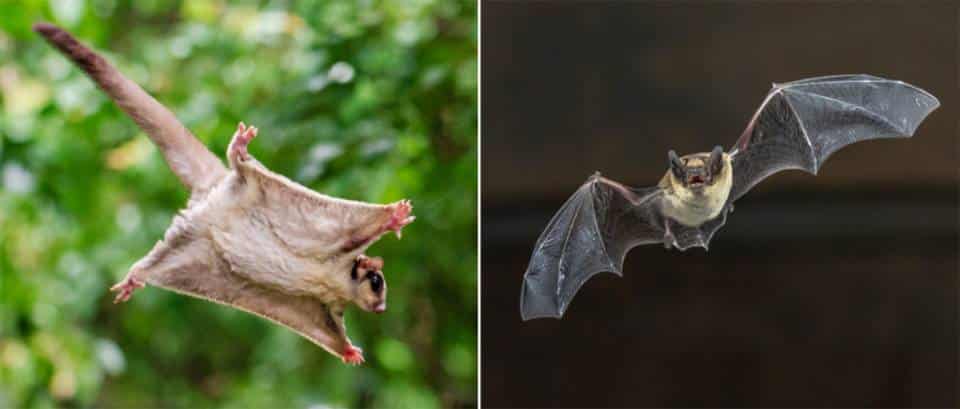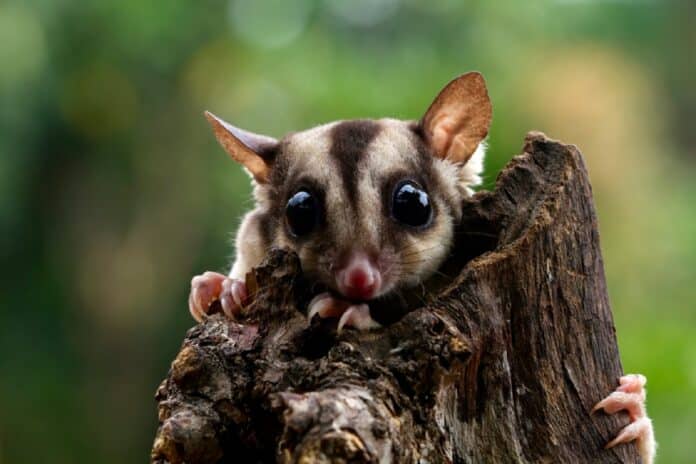Seven mammals have been observed flying, including bats, colugos, flying squirrels, and marsupial possums. A patagium, or lateral flight membrane, has developed between the fore and hindlimbs of every flying lineage.
A team of researchers led by Princeton University determined that when the seven known flying animals evolved flight, they recycled some of the same genetic elements present in their DNA since dinosaurs ruled the Earth.
The scientists studied the development of wing flaps in two tiny mammals, the marsupial sugar glider and a microbat, Seba’s short-tailed bat.
The biologists discovered a network of genes responsible for forming this flap of sugar gliders, bats, and other flying mammals.
Charles Feigin, a former postdoc in Ricardo Mallarino’s lab at Princeton University, said, “Among flying mammals, sugar gliders and bats are just about as distantly related as you can get, They also have very different mechanisms of flying, plus all the other flying mammals are more closely related to one or the other, so we have pretty good reason to suspect that similar mechanisms are at play in all of them.”
Mallarino’s lab focuses on the origins of diversity. Mallarino, an assistant professor of molecular biology with associated faculty in ecology and evolutionary biology, said, “If you go back to the days of Darwin, he was fascinated by how and why we have biodiversity.”
He also said, “Over the past decades, the biological community has done a good job understanding why: There’s a very close relationship between the features of an animal or a plant and its environment. So, for example, natural selection drives the Evolution of a beak of a certain size that allows a bird to crush a seed. But how does a bird get a larger beak or a smaller beak? Our lab approaches diversity from this other perspective: How do these things happen at the molecular level?”

According to Feigin, a research fellow specializing in marsupial development at the University of Melbourne, Sugar gliders, small nocturnal flying marsupials native to New Guinea and Australia, are more closely linked to kangaroos than to their flying squirrel cousins. Sugar gliders, like kangaroos, give birth to joeys that are still developing, providing an incredible opportunity to observe growth. The Princeton-led team used various techniques in its investigation, including DNA and RNA sequencing.
The researcher said, “Even ten years ago, you couldn’t easily sequence a species like this; that was restricted to humans or mice, or else it cost a fortune. Now because these tools have advanced so much, we can sequence a genome, even a mammalian genome, which tends to be very large, pretty easily.”
He said, “Evolution is economical; it uses what it has. Instead of evolving an entirely different pathway to make a flight structure, it uses the molecules that are at hand and are found across all mammals living on this planet. This is why we keep seeing convergent Evolution: the same genes keep coming repeatedly. They work in different ways and integrate with other genes in different ways. The patagium in bats is quite different from the patagium in gliders, but you use the same gene because it’s what is at hand. I think this is the beauty of Evolution.”
The Researcher discovered that Wnt5a, an essential gene involved in the growth of the patagium, is also associated with skin thickening in mouse ears, implying that this genetic toolkit may have served other functions before being modified for flight.
An NIH grant to Ricardo Mallarino funded the study.
Journal Reference:
- Feigin, C. Y., Moreno, Plikus,etal. Convergent deployment of ancestral functions during the Evolution of mammalian flight membranes. Science Advances. DOI: 10.1126/sciadv.ade7511
